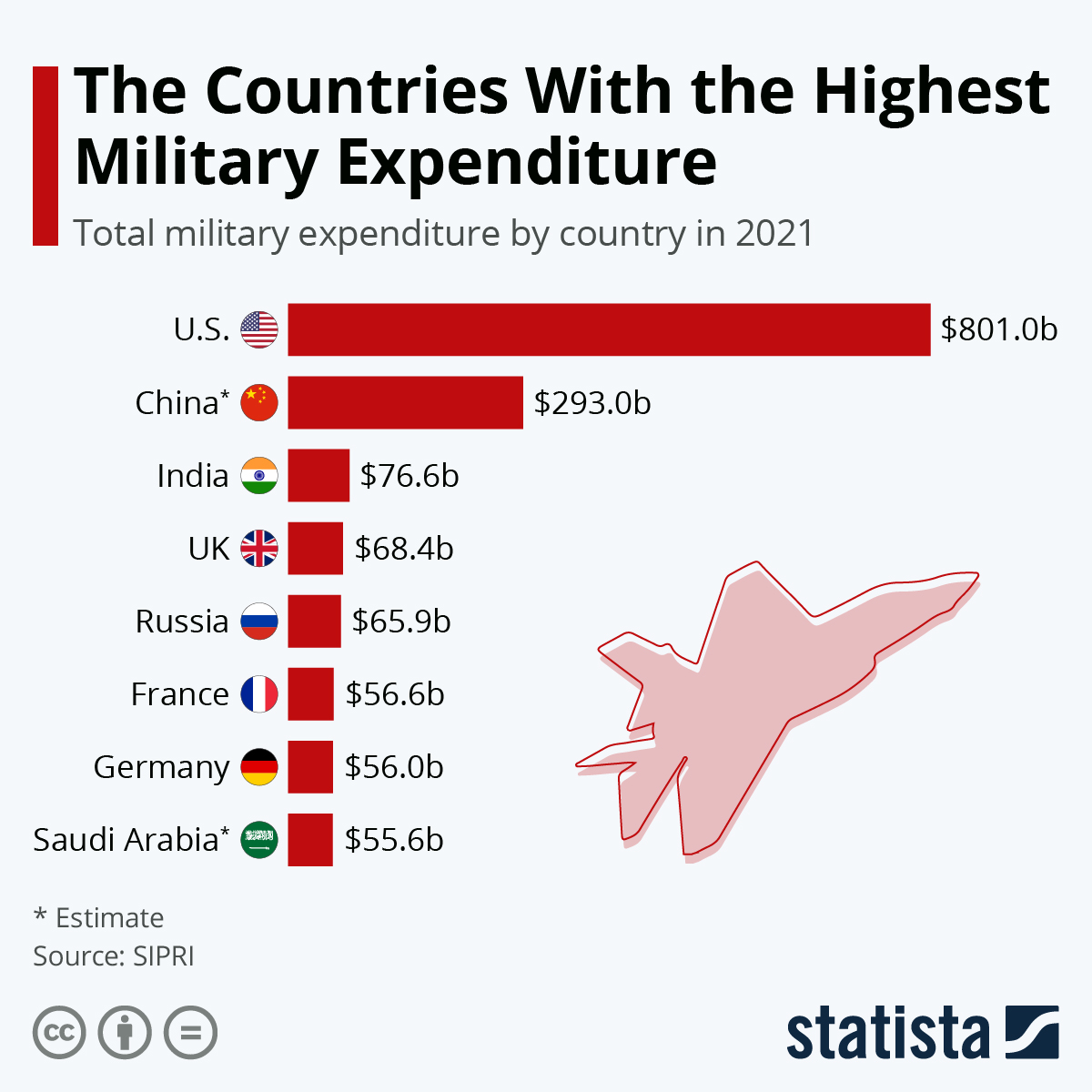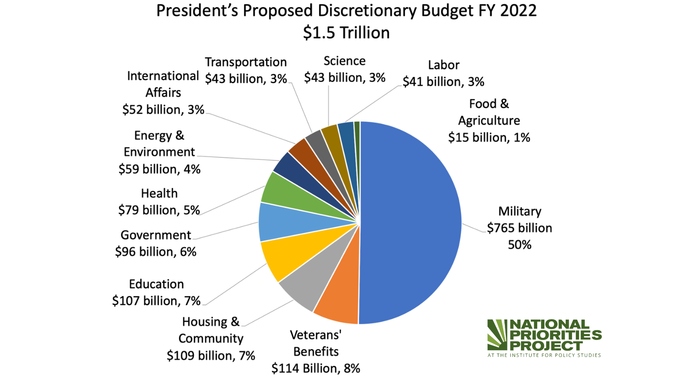
The Cycle of Military Spending,
Industry Power, and Economic Dependence
The Costs of War / The Watson Institute for International and Public Affairs
(June 25, 2023) — Military spending makes up a dominant share of discretionary spending in the United States; military personnel make up the majority of US government manpower; and military industry is a leading force in the US economy. This report finds that as a result, other elements and capacities of the US government and civilian economy have been weakened, and military industries have gained political power.
Decades of high levels of military spending have changed US government and society — strengthening its ability to fight wars, while weakening its capacities to perform other core functions. Investments in infrastructure, healthcare, education, and emergency preparedness, for instance, have all suffered as military spending and industry have crowded them out.
Increased resources channeled to the military further increase the political power of military industries, ensuring that the cycle of economic dependence continues — militarized sectors of the economy see perpetual increases in funding and manpower while other human needs go unmet.
This report details the primary economic distortions that have come at such a high cost to the more balanced functioning of the US federal government through examining the federal discretionary budget, DoD spending, and the federal workforce.
Ultimately, this paper illustrates that reducing the military budget and funding other priorities such as healthcare, education, clean energy, and infrastructure will help increase other forms of security — the kind of meaningful human security rooted in good health, good living conditions, and a productive and well-educated society — while also increasing employment nationwide.

The Top Line
The United States consistently allocates most of its federal discretionary budget to the military. As a result, the military industry continues to gain disproportionately large amounts of power in the US economy and political sphere, which in turn ensures continued growth in the military budget. This has the effect of squeezing out the resources and power of other sectors, and weakening the United States’ ability to perform core functions such as healthcare, infrastructure, education, and emergency preparedness.
This perpetuates a vicious cycle: high military spending means the strong military sector will only continue to get political power and gain public trust, which will in turn ensure it receives disproportionate resources at the expense of other sectors, which means the military will take on roles that should go to other agencies, and the cycle repeats.
Discretionary Budget Authority By Agency

Fast Facts:
- For Fiscal Year 2022, more than half of the discretionary budget went to national security spending.
- Of the money allocated to the Department of Defense, about half went to military contractors. About 30% of that went to the “Big 5” alone: Lockheed Martin, Boeing, Raytheon, General Dynamics, and Northrop Grumman.
- In 2022, the Department of Defense accounted for 34 percent of the civilian federal workforce, and Veterans Affairs made up another 20 percent, so that more than half of federal civilian employees are devoted to the military and veterans.
- The federal government workforce is comprised of about 3.5 million workers, if we include both civilians and uniformed active-duty personnel. Of this, about 72 percent is defense-related employment, including Department of Defense civilians, uniformed military personnel, and those working in Veterans Affairs. By comparison, the Department of Health and Human Services made up 4 percent of federal employees, and the Department of State only 1 percent.
- Dollar for dollar, spending on other sectors creates more jobs than spending on the military. Spending on other priorities such as clean energy, health care, or public education would create between 9 percent and 250 percent more jobs than the same amount of spending on the military.
Discretionary Spending Over Time
The Bottom Line
In the same way that the rich get richer and the poor get poorer, continuing to spend in this way will ensure that the military industrial sector grows at the expense of other, more generative economic sectors.
This is a missed opportunity: reducing the military budget and funding other priorities such as healthcare, education, clean energy, and infrastructure will help increase other forms of security — the kind of meaningful human security rooted in good health, good living conditions, and a productive and well-educated society — while also increasing employment nationwide.
Further Information
Find the full paper here. Please reach out to costsofwar@brown.edu with any questions.